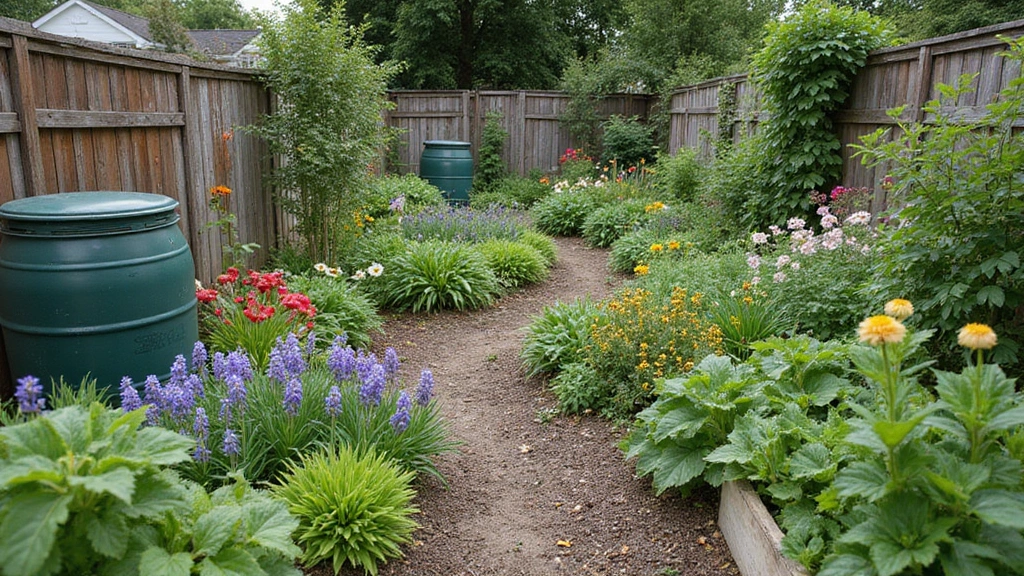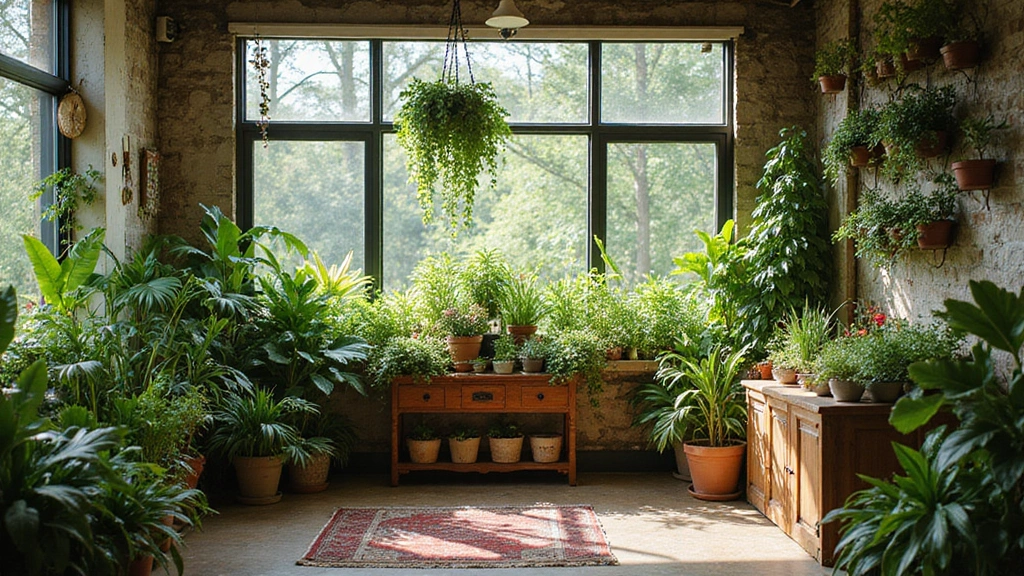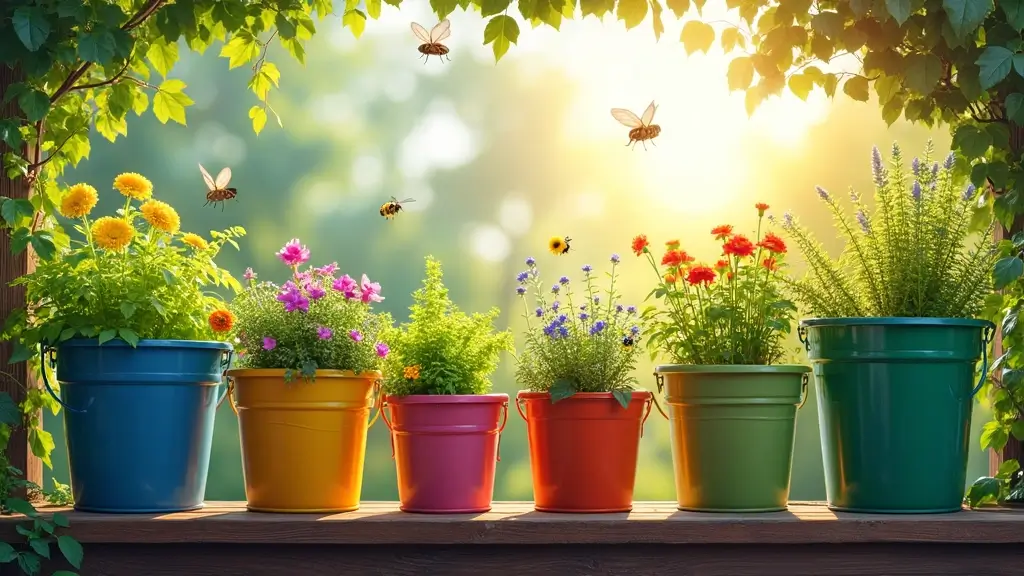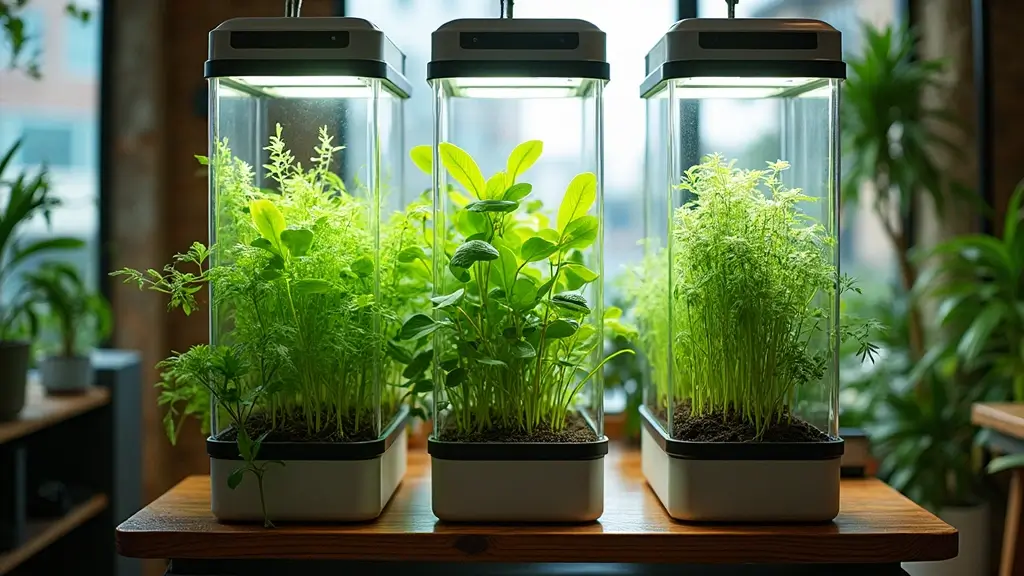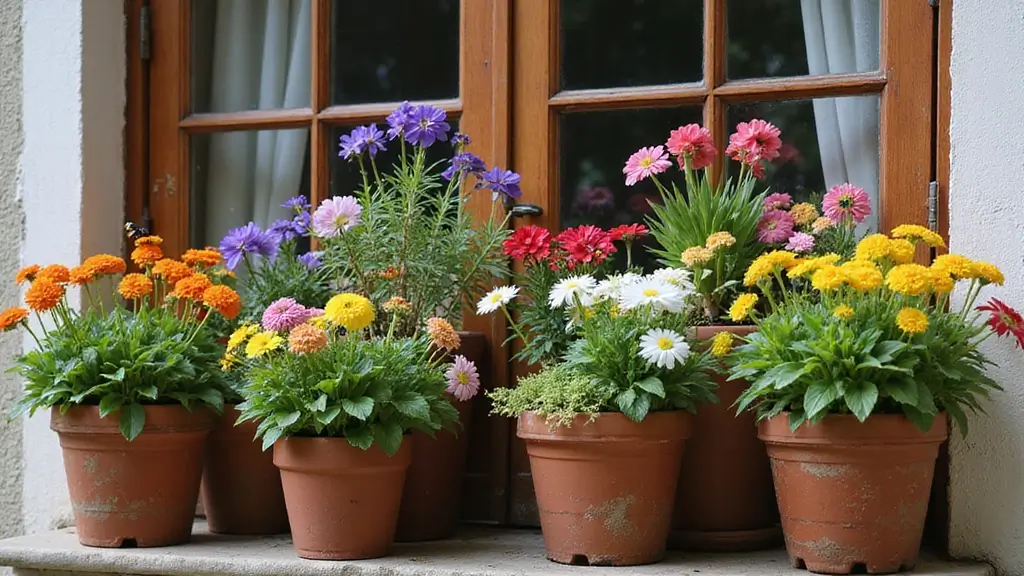Transforming your outdoor space into a sustainable haven can be as simple as embracing seasonal changes.
From vibrant spring blooms to crisp autumn harvests, there’s always something beautiful to create in your garden.
Whether you’re working with a tiny balcony or a cozy backyard, these unique outdoor garden ideas will inspire you to maximize every inch while maintaining a sustainable approach. Get ready to breathe new life into your small space gardening with innovative designs and eco-friendly practices that thrive throughout the year.
1. Vertical Gardens for Small Spaces
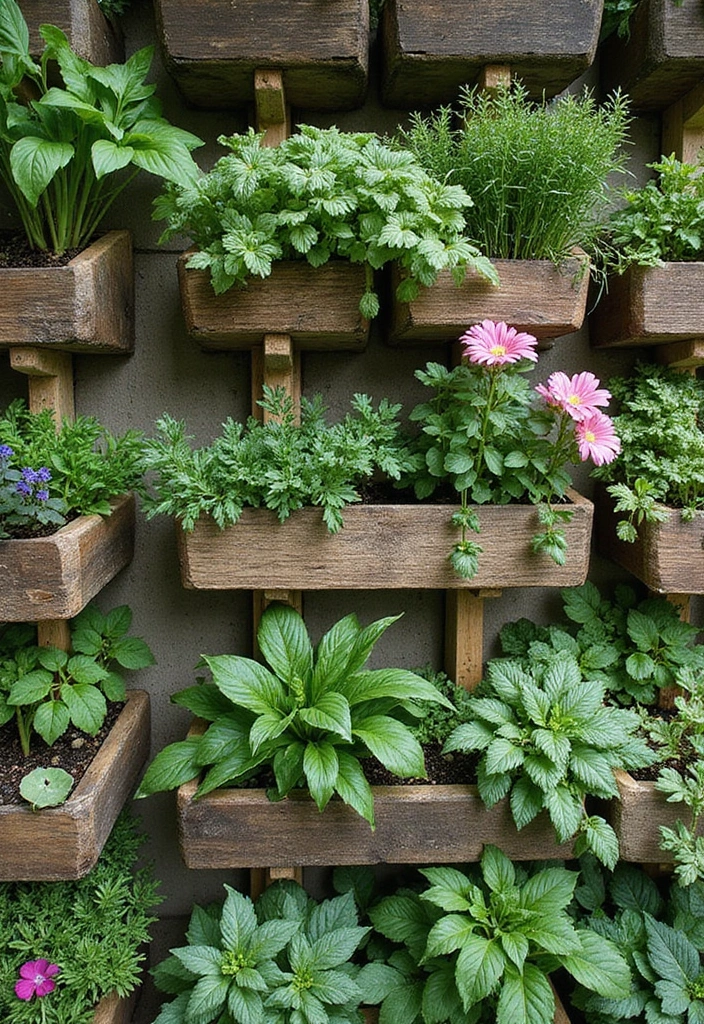
When floor space is limited, why not reach for the sky?
Vertical gardens can turn any bare wall into a stunning green feature. By using wall-mounted planters like the PlantPod Luxe – Self-Watering Wall Planters, you can easily create a lush backdrop for your outdoor sanctuary. These planters are lightweight, easy to install, and designed to simplify watering, making them perfect for showcasing herbs like basil, mint, and thyme, which not only look great but are also useful in the kitchen.
To further enhance sustainability, think about using recycled materials to build your planters. Additionally, incorporating a drip irrigation system can make a significant difference. This system allows for efficient watering, ensuring your plants remain hydrated without wasting water, which is especially important for vertical gardens.
To create a visually appealing space, consider adding a trellis for climbing plants. This feature can not only support your vertical garden but also introduce different textures and colors, enhancing the overall aesthetic.
By incorporating these elements, a vertical garden not only saves space but also adds a vibrant element to your home, fostering a lush and inviting atmosphere.
2. Seasonal Planting Strategies
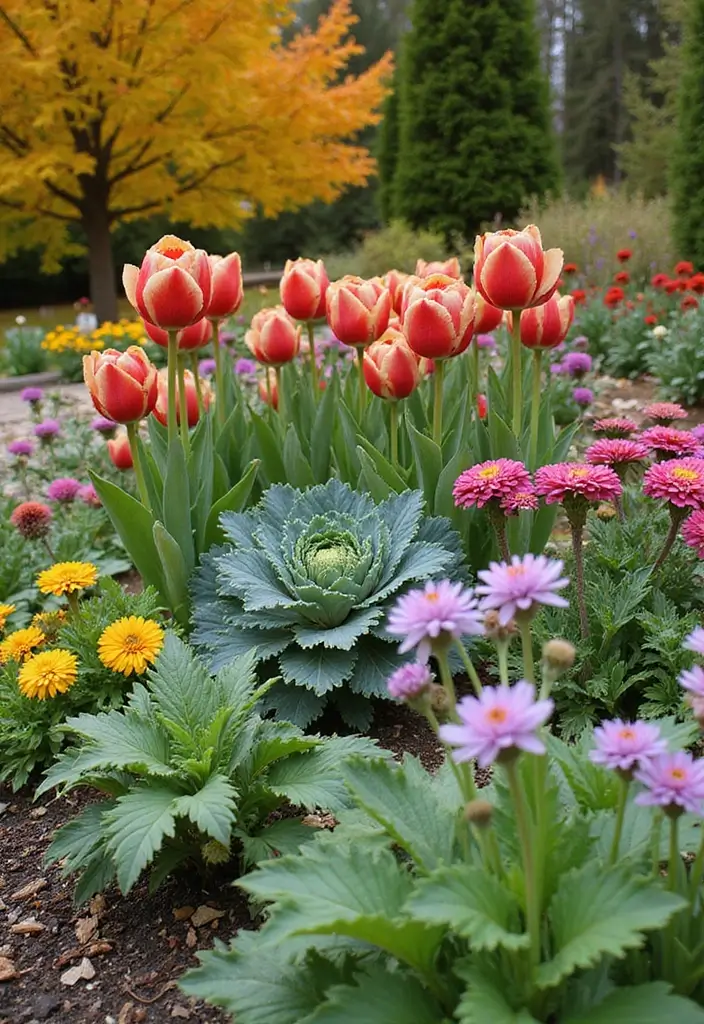
Understanding the seasons is key to creating a thriving garden. Utilize seasonal planting strategies to ensure your garden is bursting with life year-round. For instance, plant spring bulbs like tulips and daffodils in the fall for a colorful surprise when the snow melts.
In summer, focus on heat-tolerant plants such as zinnias and sunflowers. To get started, consider using heat-tolerant plant seeds, like a mix of gazanias, which can withstand high temperatures and add vibrant colors to your garden. Fall is perfect for ornamental kale and pumpkins.
Here’s how to effectively plan your seasonal garden:
– Research local frost dates to optimize planting times. A helpful resource for this is the Garden Planting Calendar, which provides guidance on when to plant different varieties.
– Rotate crops seasonally to avoid soil depletion.
– Incorporate companion planting to enhance growth and deter pests. A great way to understand this is through the Companion Planting Guide Book, which outlines various plant pairings that work well together.
By aligning your planting schedule with the seasons, and utilizing these resources, you’ll enjoy a bountiful and beautiful garden all year.
3. Container Gardening for Flexibility
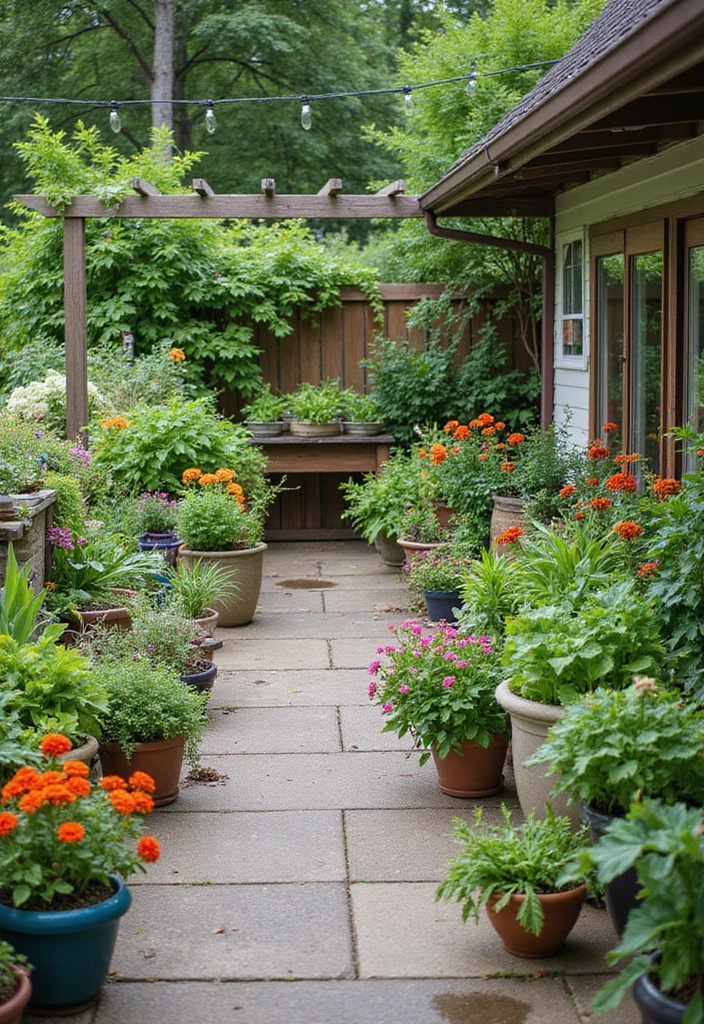
Container gardening is a fantastic solution for small spaces, offering flexibility and creativity. Utilizing pots in varied sizes allows you to arrange plants in ways that suit your aesthetic and environmental needs. You can mix flowers, herbs, and even some vegetables in these containers.
To minimize maintenance, consider using self-watering planters. These pots have drainage holes and saucers, which help keep your plants hydrated without the constant need for watering.
Experiment with different heights and colors to create an eye-catching display. For example, the decorative plant pots set provides two beautifully designed ceramic planters that can add a touch of elegance to your garden setup.
Group pots together for a fuller look or spread them out for a more spacious feel. If you’re looking to expand your gardening skills, a gardening tool set can be a great asset. This 8-piece set includes heavy-duty tools with non-slip ergonomic handles, making it easier to tend to your plants.
This method not only utilizes vertical and horizontal space but also allows you to move plants around to catch the sun or provide shade as needed. With these tools and pots, you’ll be well-equipped to create a beautiful and flexible garden space.
4. Edible Landscaping
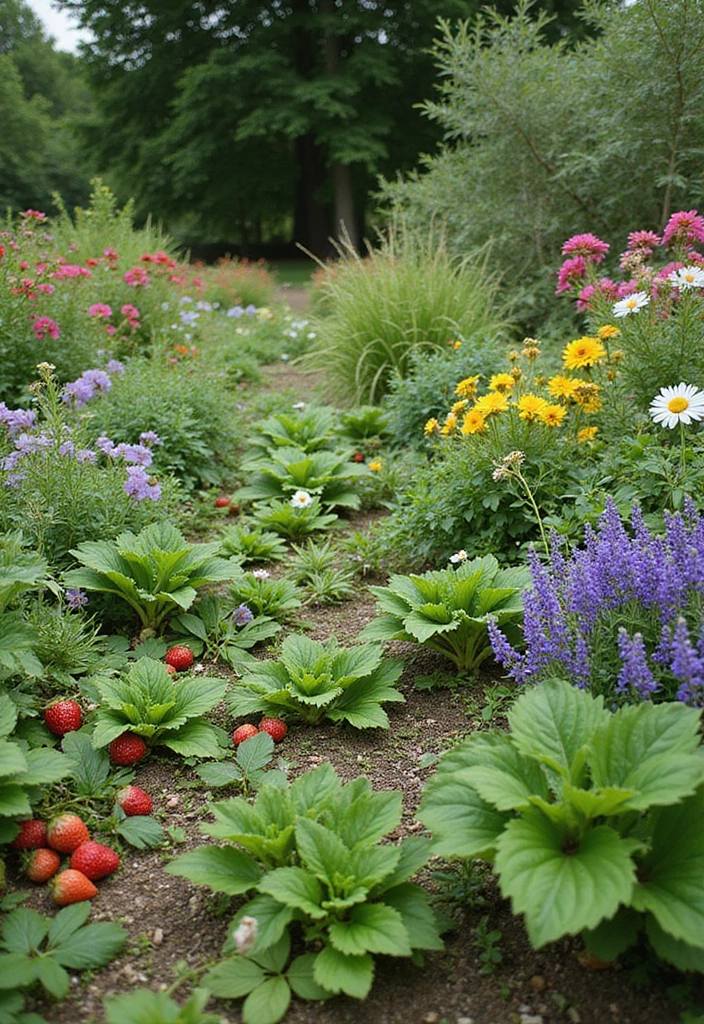
Why not combine beauty and bounty? Edible landscaping integrates food-producing plants into ornamental designs, creating a multi-functional space.
Imagine a lush garden where strawberries grow among flowering plants, or a herb spiral that doubles as a garden feature. To get started, consider selecting visually appealing edible plants, such as Swiss chard or purple basil. To enhance your garden’s beauty and functionality, you can use a helpful herb spiral kit to create an attractive spiral layout for herbs. This not only adds visual interest but also maximizes your planting space.
Creating borders with edible flowers is another fantastic way to merge aesthetics with productivity. A delightful option is the edible flower seed assortment, which includes nasturtiums and pansies that not only look beautiful but can also be enjoyed in your culinary creations.
Finally, consider incorporating fruit trees or bushes as focal points in your garden design. A great start is the fruit tree starter kit, which offers a variety of organic heirloom fruit seeds, allowing you to grow your own delicious fruits right in your backyard.
By blending aesthetics with functionality, you can enjoy a landscape that’s not only beautiful but also productive.
5. Rain Gardens for Sustainable Water Management
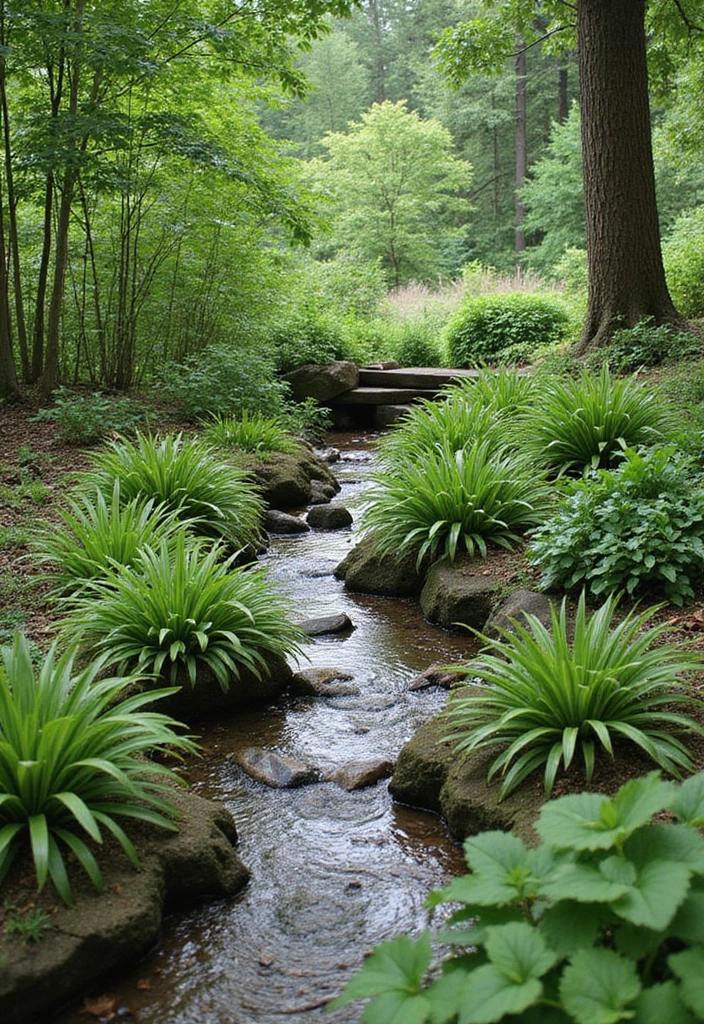
Transform runoff challenges into opportunities with a rain garden! These gardens are designed to absorb and filter rainwater, reducing runoff and enhancing biodiversity. Positioned strategically in your yard, they can be filled with native plants that thrive in wet conditions.
To get started, consider using a 50-gallon ECO rain barrel made with 100% recycled plastic to collect rainwater from your roof. This eco-friendly option is perfect for sustainable water management, allowing you to direct runoff into your garden.
Learn how to shape the garden to encourage water collection. Using Back to the Roots organic premium mulch can help support healthy plant growth while also retaining moisture. Mulch not only nourishes the soil but also prevents weeds, allowing your plants to flourish.
Choose plants that attract pollinators and provide habitat, such as the Survival Garden Seeds blue vervain seeds. This native wetland wildflower is a butterfly magnet, enhancing the biodiversity of your garden and contributing to local ecosystem health.
Rain gardens not only beautify your space but also play a crucial role in supporting environmental sustainability.
6. Composting for Healthy Soil
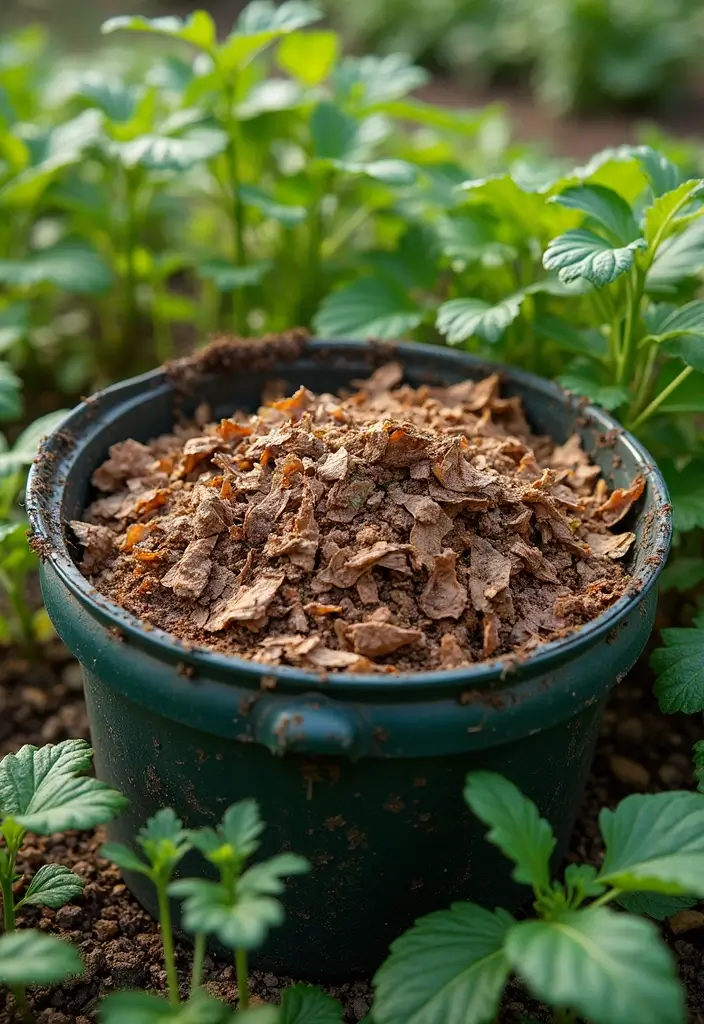
Healthy soil is the foundation of a successful garden! Composting is a sustainable way to enrich your soil, recycle kitchen scraps, and reduce waste.
Creating a compost bin can be as simple as stacking pallets or using a designated container like the Utopia Kitchen Compost Bin. This 1.3-gallon compost bucket is perfect for your kitchen countertop and comes with a lid and a spare charcoal filter, making it easy to manage your scraps without odors.
Once you have your bin, layer greens (nitrogen-rich materials) like vegetable scraps and browns (carbon-rich materials) like dried leaves. To speed up decomposition, it’s essential to aerate your compost regularly, and that’s where the EJWOX Stainless Steel Compost Aerator comes in handy. This manual turner and mixer is designed to help you mix your compost efficiently, ensuring faster decomposition while being rust-proof.
Additionally, keeping track of your compost’s temperature can help you maintain optimal conditions for decomposition. A Reotemp 20 Inch Fahrenheit Backyard Compost Thermometer can be a valuable tool. It comes with a digital composting guide, allowing you to monitor the temperature and ensure your composting process is on the right track.
With a little time and effort, and these handy tools, you’ll have nutrient-rich compost that will help your garden thrive.
Healthy soil is your garden’s best friend! Composting not only enriches your soil but also turns kitchen scraps into nutrient gold. Start layering today for a thriving outdoor garden!
7. Native Plant Gardens
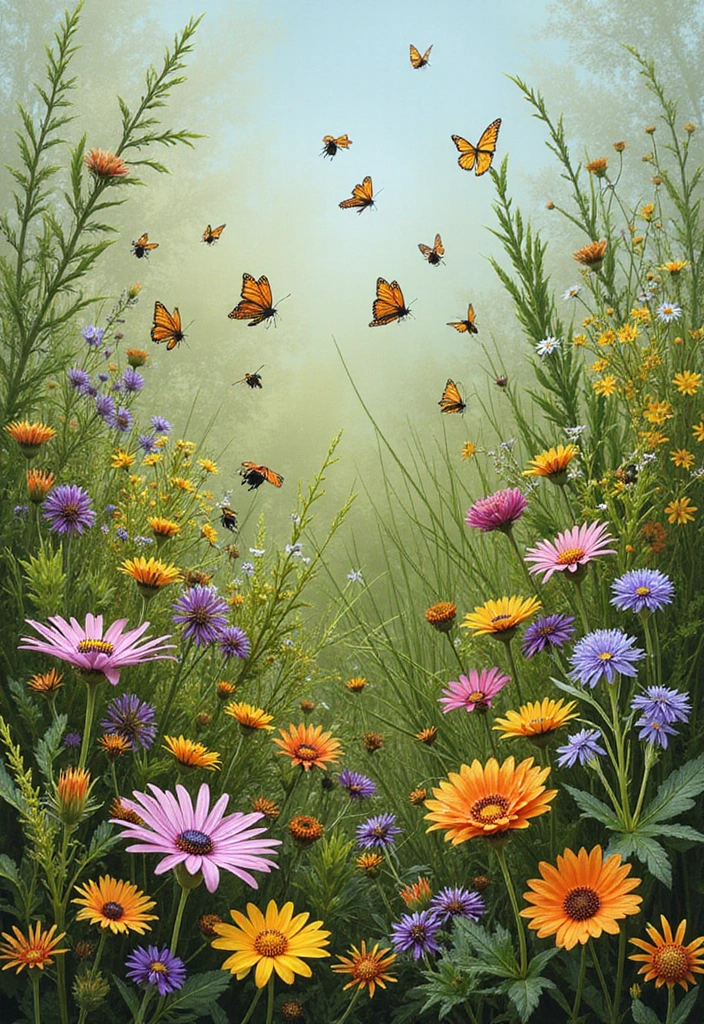
Embrace local flora by creating a native plant garden! These plants are adapted to your environment and require less water and maintenance compared to exotic varieties. By planting native species, you support local wildlife, including pollinators and birds.
To get started, research which native plants thrive in your area. A great resource is the Native Plant Guidebook, which offers valuable insights tailored to your local environment. Additionally, consider using a soil testing kit to analyze your soil’s pH and nutrient levels; this will help ensure you’re selecting plants that will flourish in your garden.
Plan for seasonal interest by selecting plants that bloom at different times, and group plants with similar water and sunlight needs together. By fostering a native plant garden, you contribute to a healthier ecosystem while enjoying a stunning display of natural beauty.
8. Herb Spiral for Space Efficiency
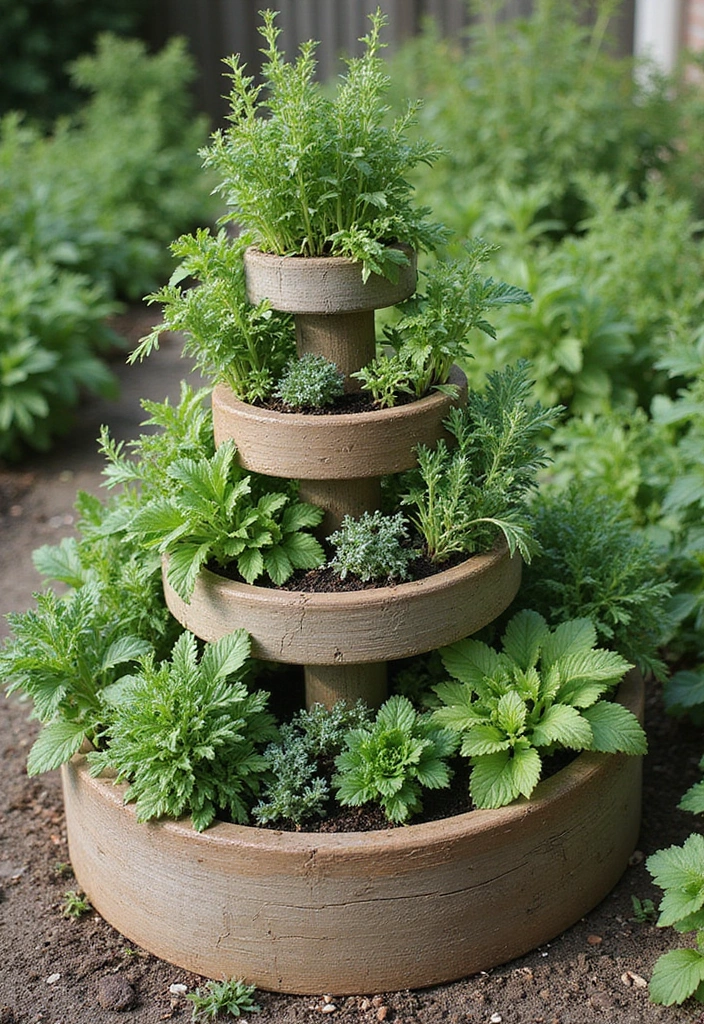
Maximize vertical space and create a stunning focal point with an herb spiral! This spiral design allows for diverse microclimates; the top is dry and sunny, while the bottom retains moisture. It’s an efficient way to grow a variety of herbs.
To build your own, start by using natural stone for herb spiral to create the structure. These 20 lbs of large river rocks not only provide a sturdy base but also add an eye-catching element to your garden. Next, fill your spiral with different soils to cater to each herb’s needs. A great option for this is organic potting soil mix from Burpee, which is ideal for growing a variety of herbs and ensures they thrive in their designated sections of the spiral.
Finally, plant culinary favorites like rosemary, thyme, and cilantro. If you’re looking to start from seeds, consider the herb garden starter kit, which includes everything you need to cultivate 10 kitchen herbs right on your windowsill. Not only will you have fresh herbs at your fingertips, but you’ll also create an eye-catching garden feature.
9. Seasonal Outdoor Furniture
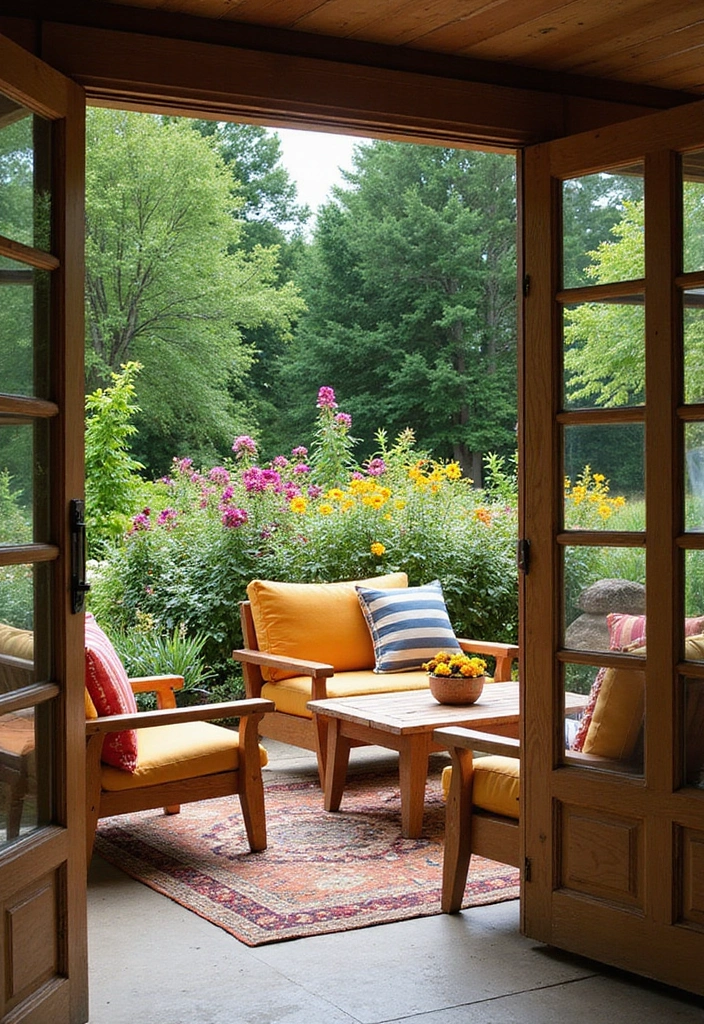
Enhance your outdoor living space with seasonal furniture that complements your garden vibe. Using natural materials like bamboo or teak can create a warm, inviting atmosphere. For example, the bamboo outdoor lounge chairs are perfect for relaxing on sunny days, offering both comfort and style. In the warmer months, consider lightweight furniture that can be easily rearranged for gatherings, such as the weather-resistant outdoor furniture set, which is ideal for hosting friends while standing up to the elements.
To elevate your seating experience, incorporate cushions and throws for added comfort. The outdoor cushions and throws provide a pop of color and plush support, ensuring that your guests feel cozy during their stay.
Arrange your seating to offer views of your garden while encouraging conversation. This thoughtful selection of outdoor furniture allows you to enjoy your garden year-round, adapting to the changing seasons and making every gathering special.
10. Shade Gardening for Hot Months
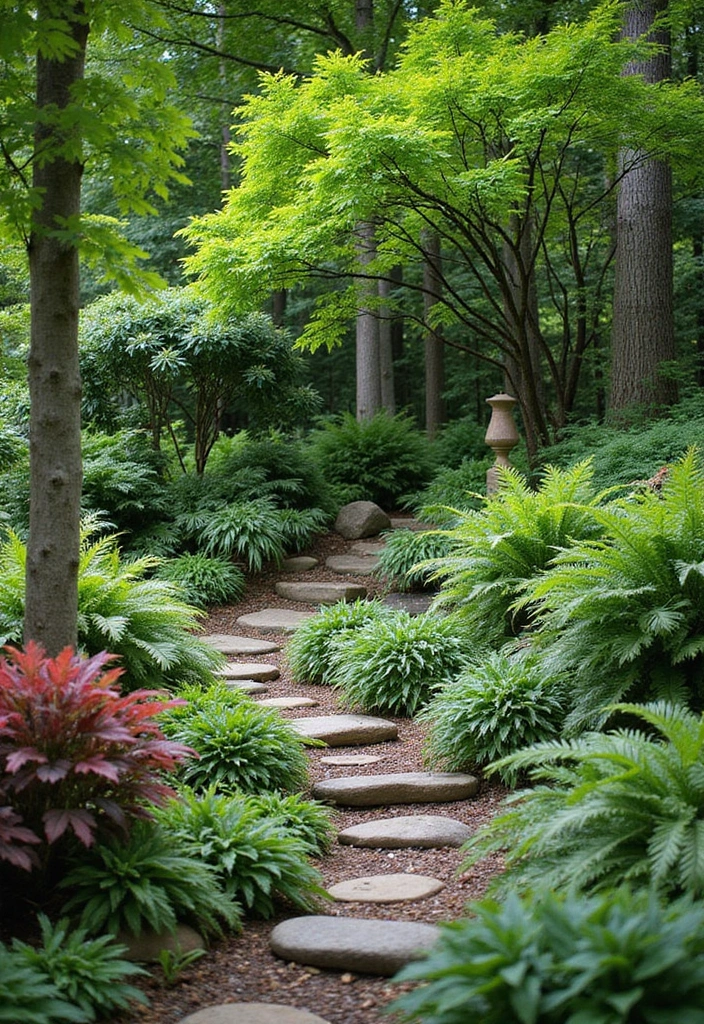
Beat the heat with a well-planned shade garden that offers cool comfort in the summer. Choosing the right plants can make a shaded area lush and vibrant. Consider ferns, hostas, and astilbes, which thrive in lower light settings. Here’s how to create a beautiful shade garden:
– Assess the amount of shade in your yard throughout the day.
– Layer plants with varying heights to create depth and interest.
– Add decorative elements like decorative garden rocks, which can enhance your design while providing a polished look to your landscape.
Additionally, using a garden shade cloth can help protect delicate plants from harsh sunlight during the hottest months, ensuring they remain healthy and vibrant. Don’t forget to have the right tools on hand, like the garden planting tools set, to make planting and maintenance a breeze.
Shade gardens can be just as stunning as sunny ones while providing a refreshing escape from the heat.
11. Outdoor Lighting for Evening Charm
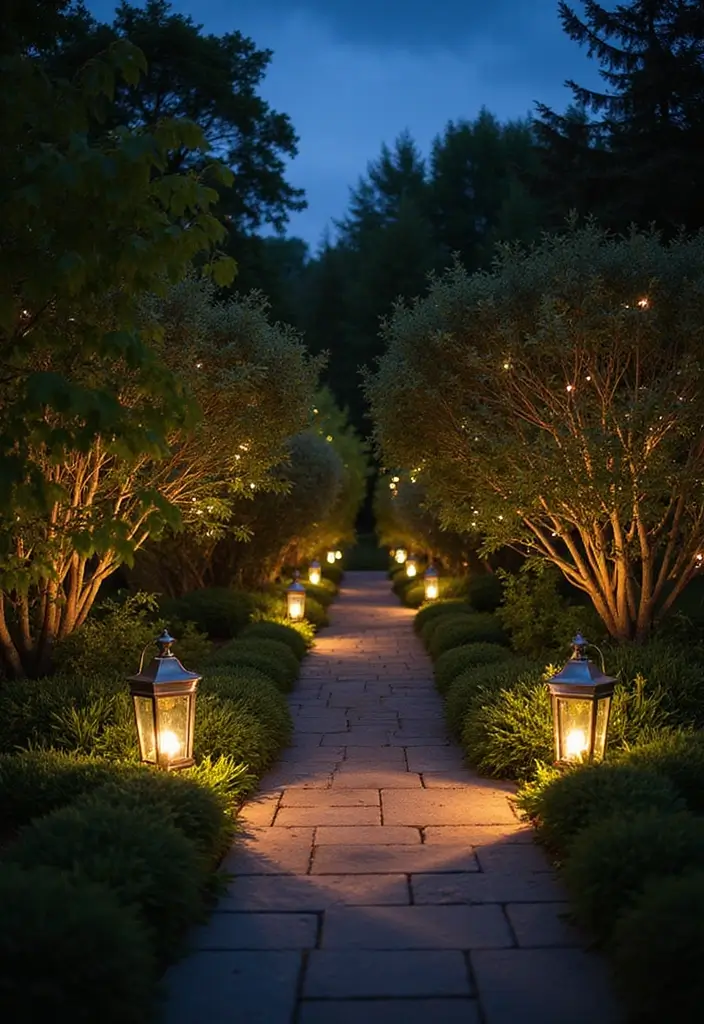
Extend your garden enjoyment into the evening with strategic outdoor lighting. Options like solar garden lights, fairy string lights, or outdoor lanterns can create a magical ambiance. Consider using lighting to highlight pathways, favorite plants, or seating areas.
Here’s how to set the mood:
– Choose warm white lights for a cozy feel, as seen in the soft glow of the fairy string lights, perfect for draping over trees or around patio furniture.
– Use motion sensors for convenience and safety, especially with the solar garden lights that turn on automatically at dusk, guiding guests safely through your outdoor space.
– Arrange lights to focus on architectural features or garden art, where outdoor lanterns can add a vintage touch while illuminating specific areas like steps or seating arrangements.
Well-placed lighting transforms your garden into an enchanting space for relaxation and entertainment, allowing you to enjoy your outdoor haven long after the sun sets.
12. Pollinator-Friendly Gardens
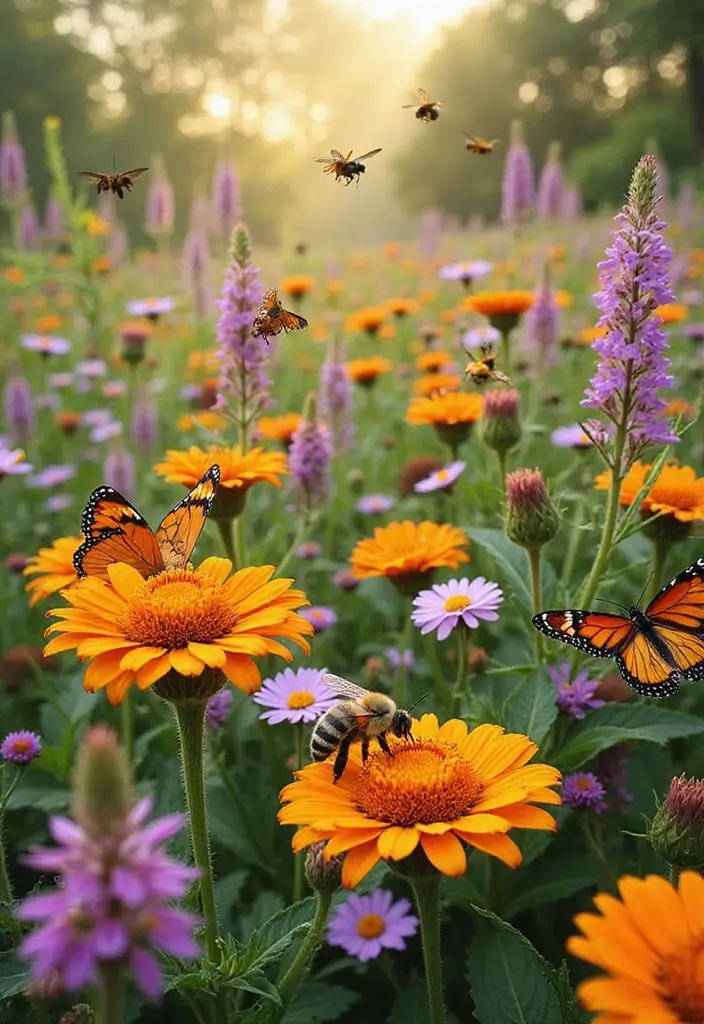
Attract essential pollinators like bees and butterflies with a dedicated garden space. Planting a variety of nectar-rich flowers encourages wildlife to visit and thrive. Focus on native plants, such as those found in the native wildflower seed mix, which includes over 7,500 open-pollinated and non-GMO varieties suited for your area. These plants not only appeal to local pollinators but also ensure a vibrant and diverse garden.
To create a pollinator-friendly garden, consider grouping plants in clusters for easy access. Additionally, it’s wise to avoid pesticides that can harm beneficial insects. Instead, you might use Earth’s Ally 3-in-1 plant spray, an organic pesticide alternative that can help control pests while being safer for pollinators.
Incorporating plants that bloom at different times will provide year-round support for pollinators. To enhance your garden further, consider adding a bee hotel to offer shelter for beneficial insects like ladybugs and lacewings. A pollinator garden not only boosts your local ecosystem but also produces stunning displays of color.
13. Compost Tea for Plant Nourishment
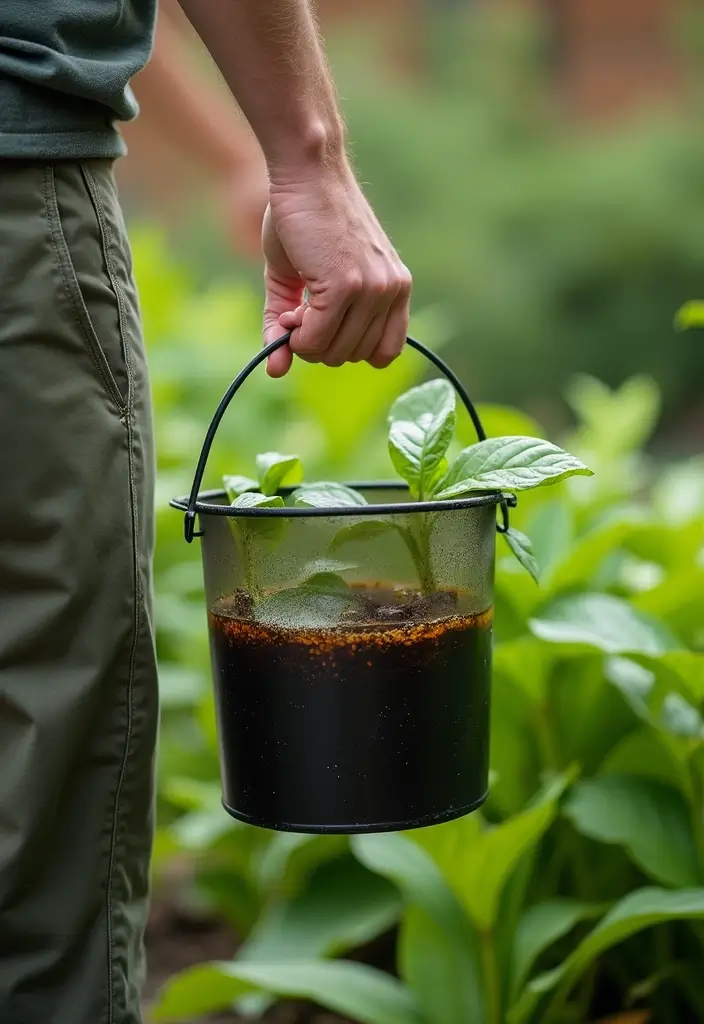
Give your plants a nutrient boost with compost tea!
This liquid fertilizer is made by steeping compost in water, creating an organic solution that can be applied directly to plants. It’s a great way to recycle compost and enhance soil health. Here’s how to brew it:
– Start by using breathable compost bags to hold your finished compost. These bags allow water to permeate while keeping the compost contained, ensuring an effective steeping process.
– Fill the bag with compost and steep it in a bucket of water, like the garden bucket for brewing which is designed for easy mixing and pouring. Stir the mixture occasionally to aerate it, which helps to further release the nutrients.
– Before using the tea, remember to measure the right dilution with a dilution measuring tool. This ensures that you provide the perfect nutrient concentration to your plants—too strong can be harmful, while the right mix will make your garden thrive.
Your plants will love this simple and effective method!
14. Colorful Annuals for Seasonal Pops
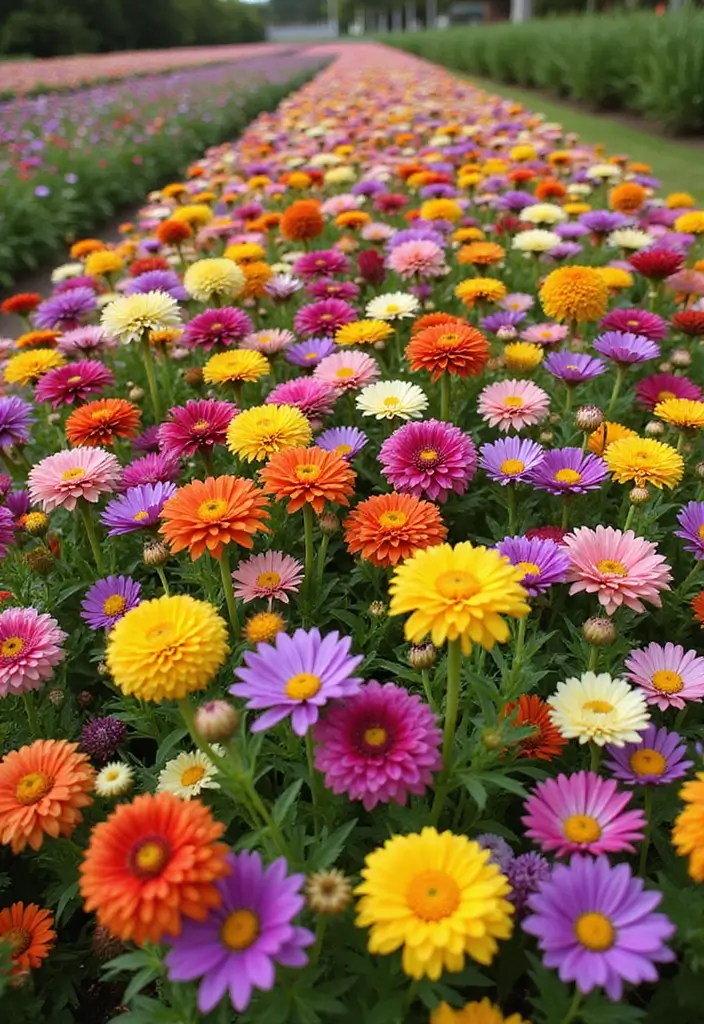
Add bursts of color to your garden each season with carefully selected annuals like petunia plants that bloom vibrantly in spring and marigold seeds that provide a cheerful display all summer long. Here’s how to maximize their impact:
– Mix different varieties for a layered look that adds depth to your garden.
– Plant annuals alongside perennials for a cohesive design that keeps your garden looking polished.
– Rotate annuals each year for fresh looks and optimal growth, ensuring your garden remains dynamic.
To make planting easier, consider using quality tools like the Fiskars Ergo Garden Trowel. This heavy-duty gardening hand tool is perfect for digging and planting, making it simpler to integrate new plants into your existing garden layout. Annuals are a great way to keep your garden lively and colorful throughout the year.
15. Sustainable Pathways with Recycled Materials
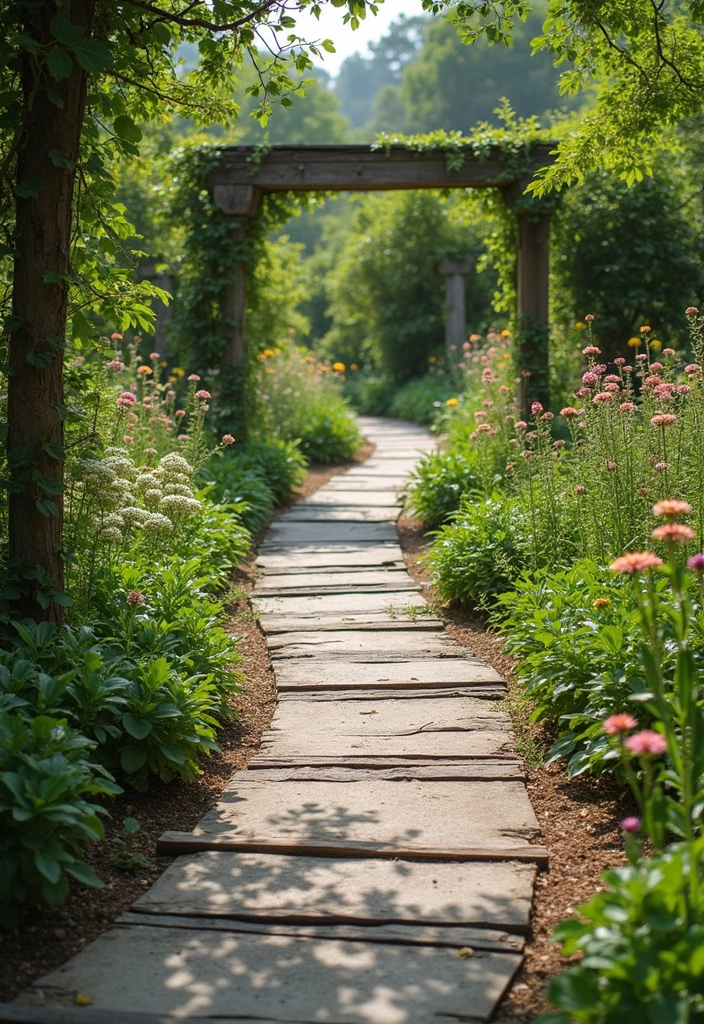
Create charming pathways using sustainable materials to enhance your garden’s accessibility and aesthetic. Consider using reclaimed wood, stones, or even crushed glass to form unique paths that blend seamlessly with nature. Here’s how to approach it:
– Plan the layout to connect key areas of your garden.
– Use materials that are locally sourced or repurposed. For instance, the LINSHRY wood garden fence can serve as beautiful reclaimed wood garden edging, helping to define the borders of your pathways while reducing waste and enhancing the natural look of your space.
– Consider adding edging to keep the pathway neat and defined. To achieve this, you might opt for the 3 pack rubber stepping stones, which are designed to resemble natural stone pavers. These are durable and easy to install, ensuring that your pathways remain functional and visually appealing.
A sustainable pathway not only reduces waste but also adds character to your outdoor space, making it inviting for both you and your guests.
16. Winter Garden Care
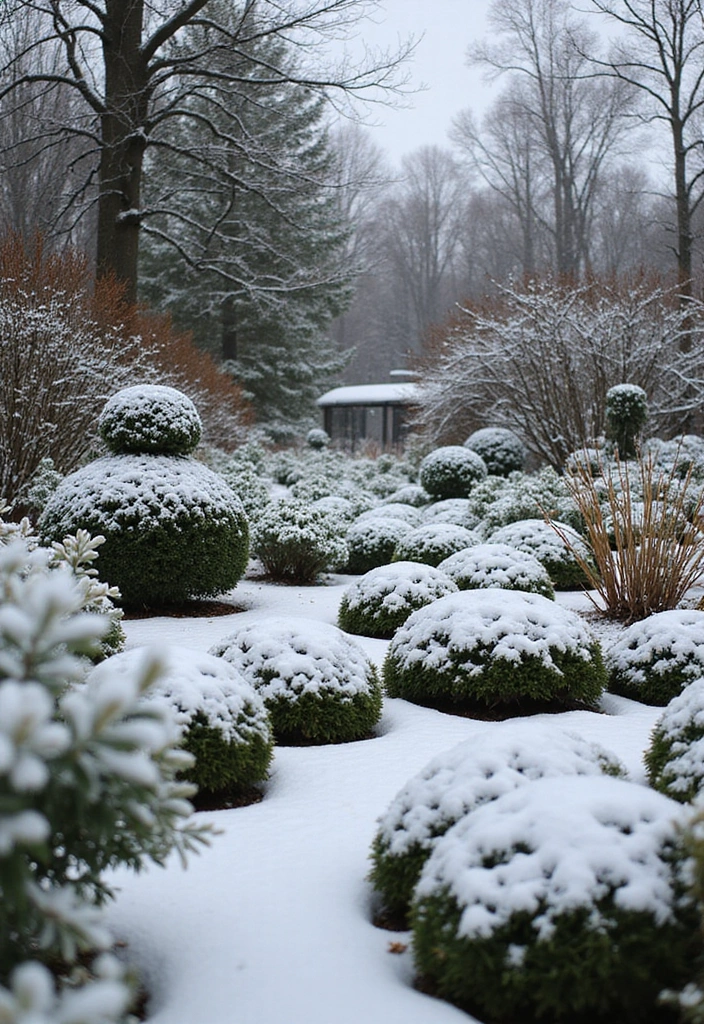
Taking care of your garden in winter doesn’t mean the fun stops! Winter care is crucial for the health of your plants and soil. Here are some winter gardening tips to keep your garden thriving:
– Consider covering delicate plants with burlap plant covers to provide them with protection against harsh winter elements. These reusable covers are designed to keep your plants warm while allowing moisture and air circulation.
– Use winterized plant pots to shield the roots from freezing temperatures. These thermal insulation wraps are perfect for maintaining a stable environment for your plants during the cold months.
– Don’t forget to clear debris and fallen leaves using a garden debris rake. Keeping your garden tidy not only prevents pests but also promotes a healthier environment for your plants.
Embracing winter gardening can keep your garden alive and ready for the spring bloom.
Winter gardening isn’t just maintenance; it’s a promise of spring! Protect your plants, clear the debris, and watch your garden thrive, even in the cold.
17. Fall Harvest Gardens
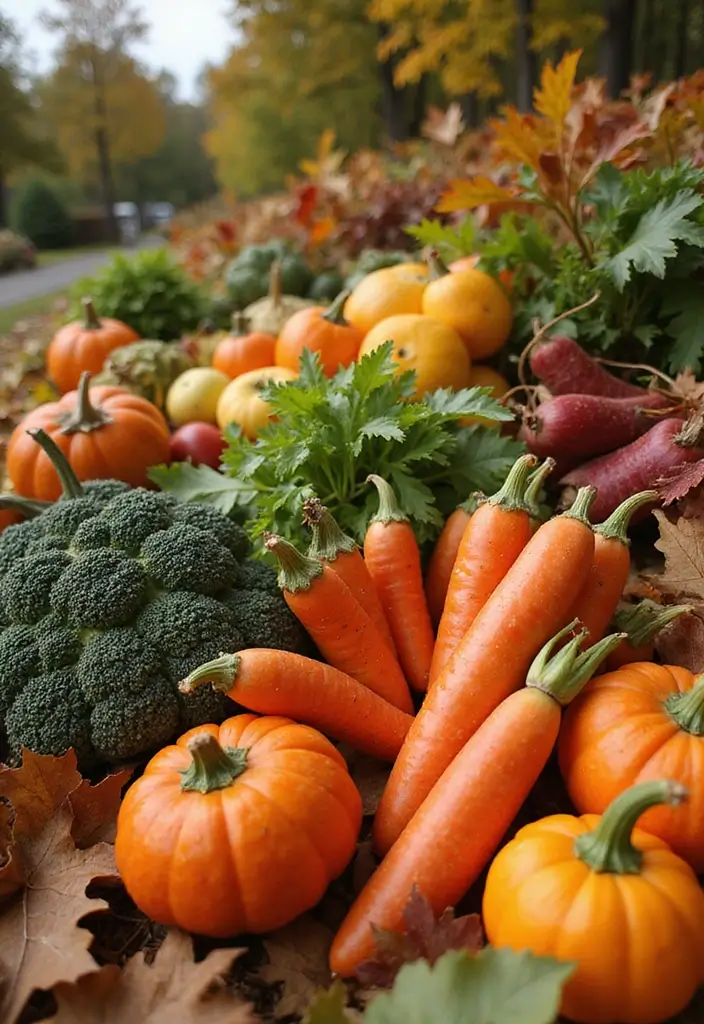
Plan a fall harvest garden that not only looks beautiful but provides a bounty of seasonal produce. Incorporate late-blooming flowers along with crops like squash, carrots, and kale, which thrive in cooler temperatures. To ensure your garden flourishes during the fall, consider these helpful tips:
– Plant crops that can withstand frost for sweeter flavors. For this, you might find the organic vegetable seeds variety pack particularly useful, as it includes a mix of herb, fruit, and vegetable seeds that are all heirloom and non-GMO, perfect for a productive garden.
– Use colorful leaves and fruits to create visual appeal in the garden. A well-planned layout can help, and while you’re at it, make sure your soil is in top condition. A garden soil tester kit can help you analyze soil pH and nutrients, ensuring your plants get the best start possible.
– Start preparing the soil for winter by adding organic matter. As you work in your garden, consider using a garden kneeler and seat. This multifunctional tool not only provides a comfortable spot to kneel while planting but also doubles as a seat for when you need a break, making gardening easier and more enjoyable.
A fall harvest garden can be both productive and a feast for the eyes, and with the right tools and seeds, you’ll be well on your way to creating an inspiring outdoor space.
18. Spring Awakening
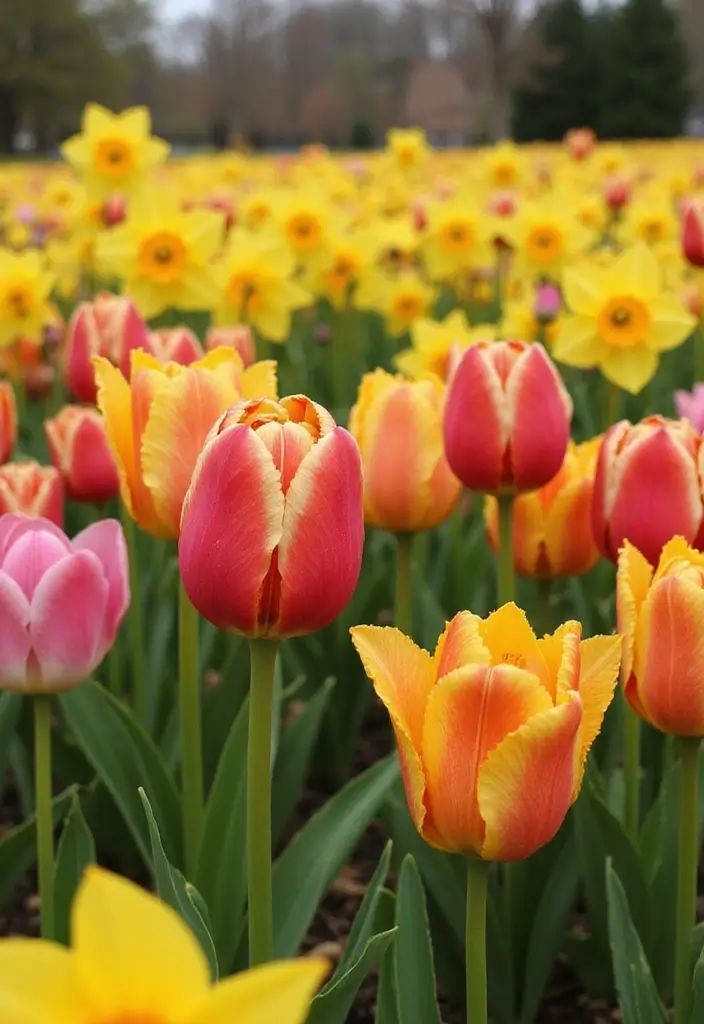
Spring is the perfect time for refreshing your garden and planning for new growth. As the earth thaws, get ready to plant spring-blooming bulbs and vibrant annuals. To ensure your garden flourishes this season, consider investing in some essential tools:
– Start by cleaning and organizing your gardening tools with a garden tool set. This 9-piece heavy-duty gardening hand tools set comes with a durable organizer handbag, making it easy to keep everything in order and ready for use.
– Assess the previous year’s plantings and make necessary changes. A well-organized tool set will make it easier to evaluate and adjust your garden layout.
– Prepare your soil with compost to kickstart the growing season. A compost bin can help you manage kitchen scraps and create nutrient-rich compost right at home, giving your soil the boost it needs.
– Finally, don’t forget about planting those beautiful spring-blooming bulbs. The spring-blooming bulbs assortment offers a colorful variety that attracts bees, butterflies, and hummingbirds, enhancing the beauty of your garden and supporting local pollinators.
Spring is a time of renewal, and with the right tools and planning, your garden can be a stunning reflection of that!
19. Summer Drought Tolerance
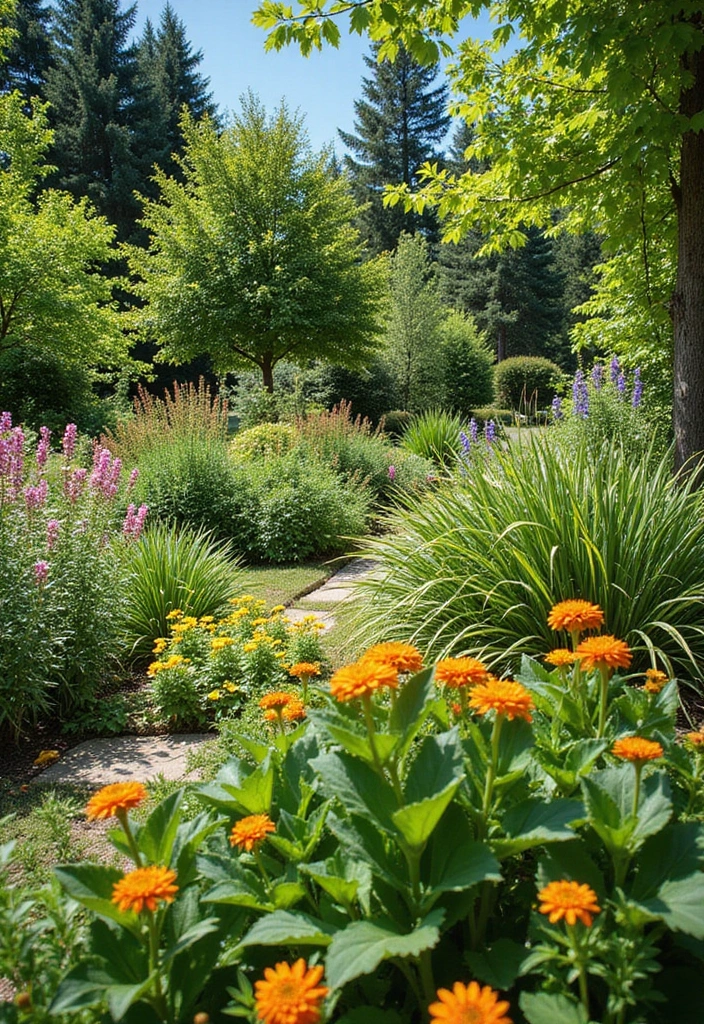
Summer heat can be tough on gardens, but with a few drought-resistant strategies, you can keep your plants flourishing. Choosing plants that are naturally adapted to hot and dry climates is essential. Additionally, incorporating specific practices can significantly help.
Using organic mulch, such as GardenStraw, is an excellent way to retain moisture and suppress weeds. This all-natural mulch is cleaned and sustainably sourced, making it a great choice for eco-friendly gardening.
Consider utilizing a soaker hose, like the Gilmour 5/8″ x 50′ Round Weeper, for your garden beds. This flexible drip irrigation solution allows you to water deeply and less frequently, which encourages deep root growth, promoting healthier and more resilient plants.
Also, when selecting plants, opt for drought-tolerant plant seeds like the wildflower seeds mix, which features over 80,000 seeds of 20 non-GMO varieties. This dryland wildflower blend is not only perfect for low-water gardens but also attracts pollinators, adding both beauty and biodiversity to your garden.
By implementing these drought-resistant strategies and products, you can create a garden that is both beautiful and eco-friendly, even during the hottest summer months.
20. Creative Garden Borders
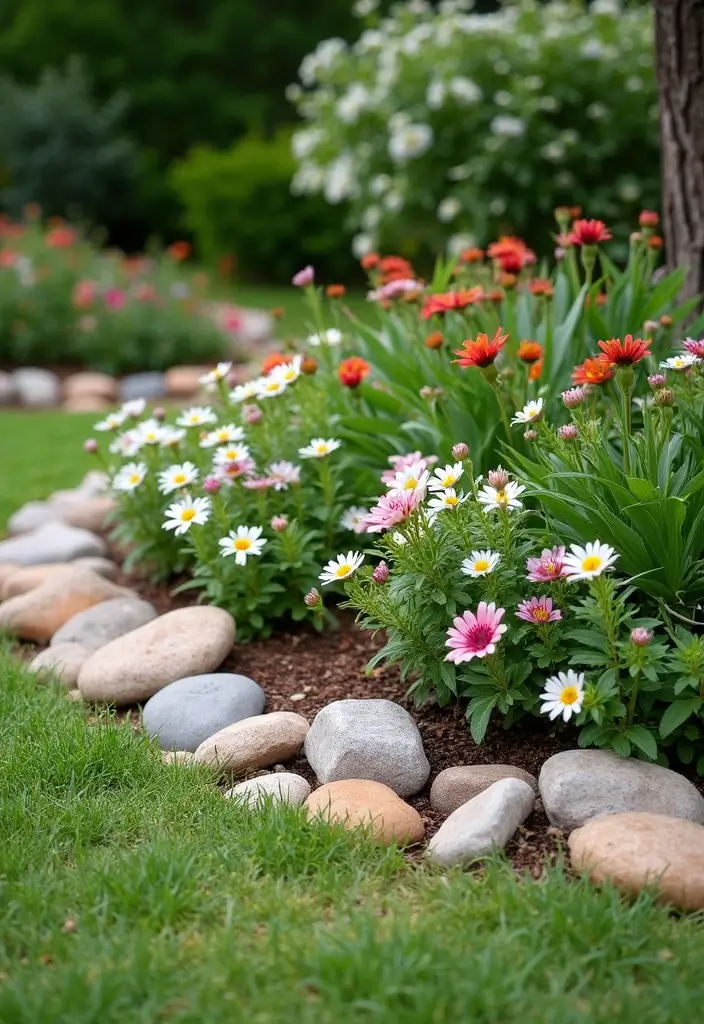
Define your garden space with creative borders that enhance its structure and style. Using natural materials, such as logs and stones, can complement your landscape beautifully. For a polished look, consider adding well-chosen products like the EasyFlex No-Dig Landscape Edging, which resembles decorative stone and can create a clean boundary around your beds while being easy to install.
Incorporate low-growing plants for a softer appearance, such as Outsidepride Irish Moss Ground Cover Seeds. These mat-forming plants not only provide a lush, green edge but also thrive in various conditions, making them ideal for pathways and rock gardens.
For a decorative touch, consider using the Decorative Garden Border Fencing. This rustproof metal fencing serves as an ornamental barrier while ensuring that your flowers and plants stay in their designated areas.
Well-placed borders can add charm and clarity to your garden design, helping to define your space while enhancing its overall aesthetic.
21. Handcrafted Garden Decor
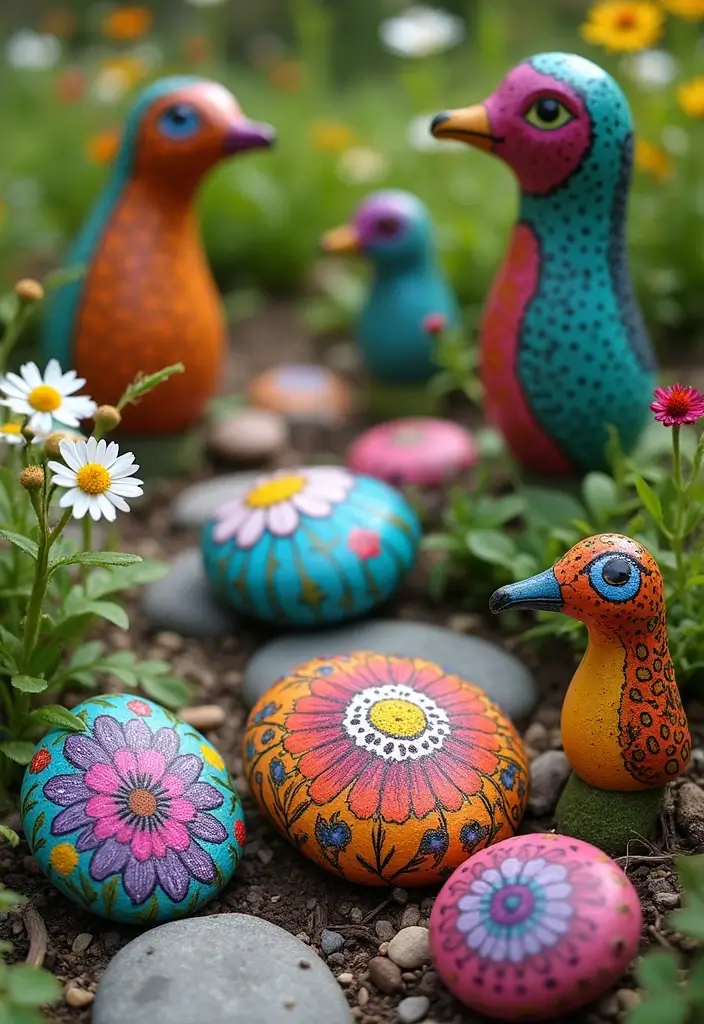
Add personality to your garden with handcrafted decor pieces that reflect your style. Consider making birdhouses, garden stakes, or personalized planters using reclaimed materials. For a fun activity, try the DIY birdhouse kit. This kit includes everything you need for a creative project, complete with paints and a brush, making it a delightful way to enhance your garden while expressing your artistic side.
Here’s how to personalize your space:
– Incorporate whimsical art or sculptures that resonate with you. One charming option is the garden art sculptures which can add a splash of color and character to your outdoor setting.
– Use old tools to create unique garden art.
– Collect stones and paint them for additional charm.
Additionally, you can make your plants stand out with a beautifully crafted personalized planter set. These pots not only allow for customization but also come with a drainage hole, ensuring your plants thrive.
Handcrafted elements are about expressing your creativity while making your garden feel truly yours.
22. Recycled Planters
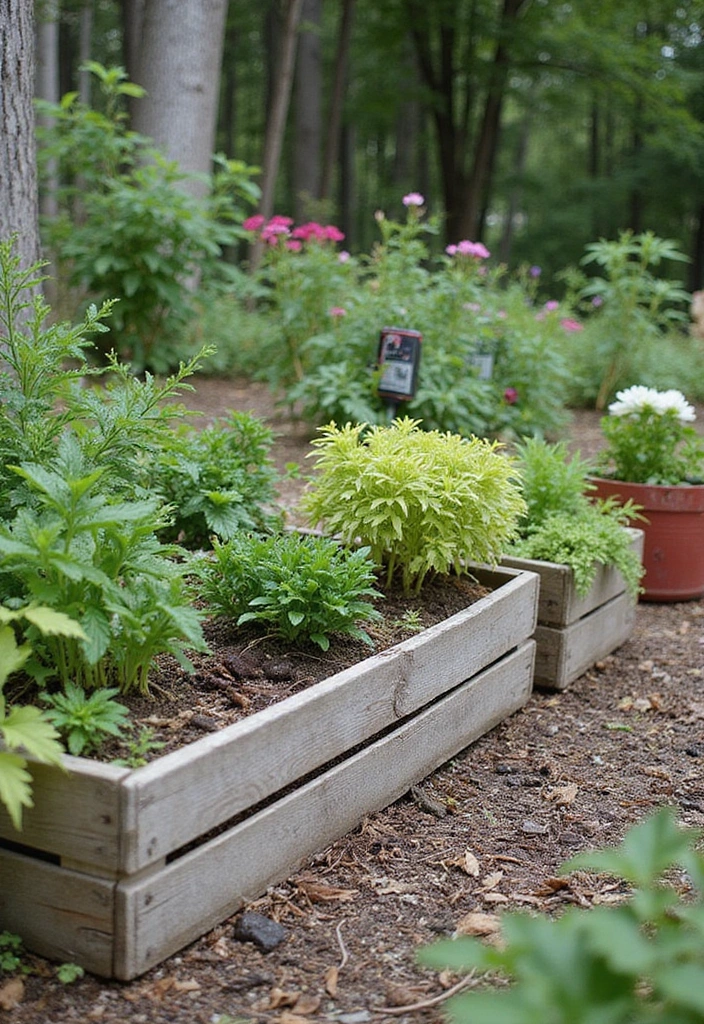
Show your commitment to sustainability with recycled planters!
Convert old containers, wooden pallets, or even tin cans into stylish planters. This not only reduces waste but also gives your garden a unique touch. Here’s how to get started:
– Clean and prepare your recycled items for planting. A drill with adjustable speed can help you easily create drainage holes in tin cans or other materials, ensuring proper aeration for your plants.
– Personalize with eco-friendly paint for outdoor use to add a splash of color and character to your upcycled planters. This non-toxic paint is perfect for bringing out your creative side while being safe for the environment.
– Don’t forget to protect your hands while working! A pair of durable gardening gloves will ensure you have a firm grip and keep your hands safe from sharp edges or rough surfaces as you work on your recycled planters.
Recycled planters bring charm and eco-friendliness to your outdoor space, making them a wonderful addition to your garden!
23. Seasonal Foliage
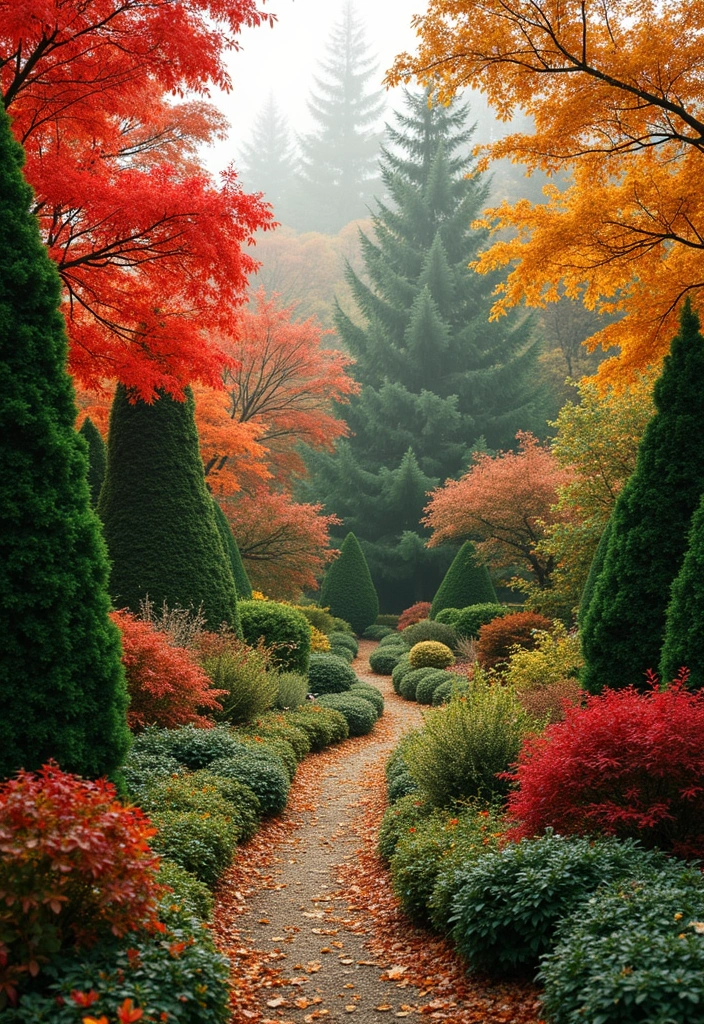
Introduce a dynamic element to your garden by incorporating seasonal foliage. Evergreens provide structure during winter, while deciduous plants offer colorful fall displays. Using a mix of both can create visual interest throughout the year.
To maintain that interest, consider trees that change color seasonally. You can explore this concept further with Why Do Leaves Change Color? (Let’s-Read-and-Find-Out Science 2), which provides insights into how and why foliage transforms.
Layering foliage with different textures and colors adds depth to your garden. For instance, incorporating grasses can enhance this effect significantly. Check out Grasses for Gardens and Landscapes to discover how to select the perfect varieties that provide movement and beauty.
If you’re looking for a low-maintenance option, consider the Mixed Seasonal Foliage Plants. These potted artificial eucalyptus plants can add a touch of elegance to your space without the upkeep of live plants.
With these elements, seasonal foliage can turn your garden into a constantly changing masterpiece.
24. Water Features for Serenity
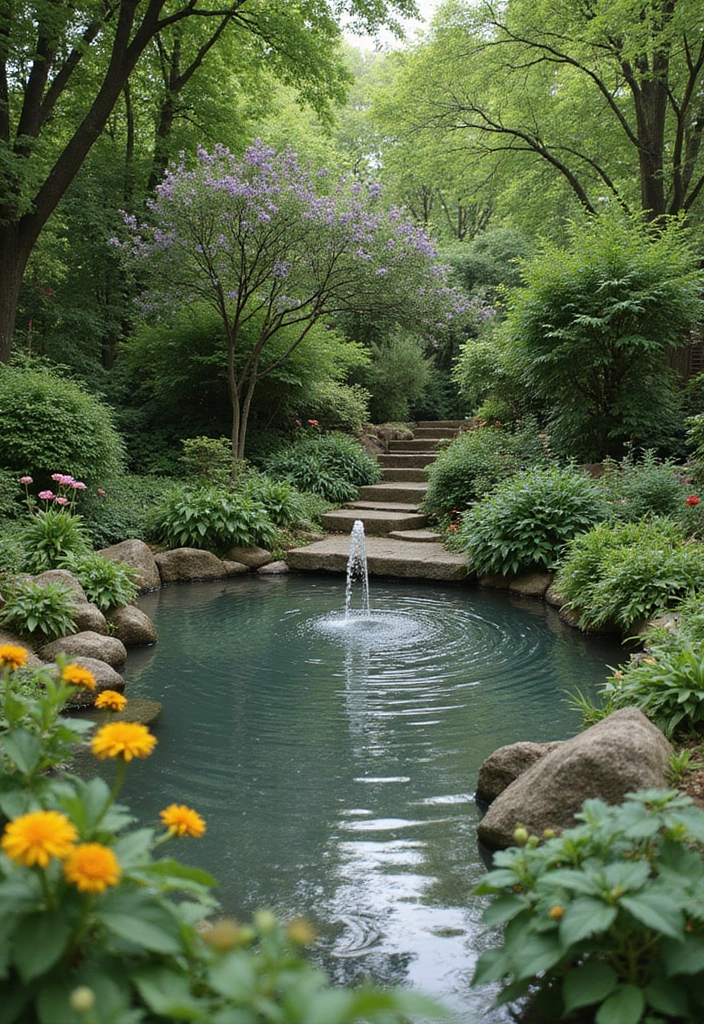
Create a tranquil atmosphere in your garden with water features that soothe the senses. Whether it’s a small pond, fountain, or birdbath, adding water can enhance relaxation and attract wildlife. Consider incorporating a solar-powered fountain, which provides a low-maintenance option that recirculates water, making it easy to maintain while adding a gentle ambiance to your outdoor space.
To complement your water feature, a birdbath with stand can not only serve as a beautiful focal point but also attract various birds, enriching your garden with life and movement. Its antique bronze finish adds charm, while the upgraded 5-pronged base ensures stability.
If you’re looking to create a more substantial water element, consider the pond kit, which allows you to design an ecosystem right in your backyard. The 8-foot by 11-foot dimensions offer ample space for fish and aquatic plants, enhancing both the visual appeal and the serene sounds of flowing water.
Position your water features where you can enjoy their soothing sounds, such as near seating areas. These elements not only elevate the beauty of your garden but also foster a calming environment.
25. Outdoor Art Installations

Brighten up your garden with outdoor art installations that reflect your personality and style. Choosing sculptures, painted rocks, or mosaic paths can create exciting focal points.
For instance, consider the Lakeside Collection heart garden sculpture to add a whimsical touch that complements your garden theme. This charming piece serves as a perfect focal point, drawing the eye and adding character to your outdoor space.
If you’re interested in creating your own pathways, the Milestones mosaic stepping stone kit offers everything you need to design custom stepping stones that enhance your garden’s aesthetics. It’s a fun way to express your creativity while adding functionality to your garden.
Another wonderful option is the JOYEZA rock painting kit deluxe, which provides supplies to turn ordinary rocks into stunning art pieces. These painted rocks can be strategically placed throughout your garden to create a delightful surprise and add a personal touch.
By selecting pieces that resonate with your style and utilizing these suggested products, you can create a vibrant and inviting garden that showcases your creativity. Outdoor art truly adds an element of surprise and creativity to your landscape.
26. Grow Your Own Cutting Garden
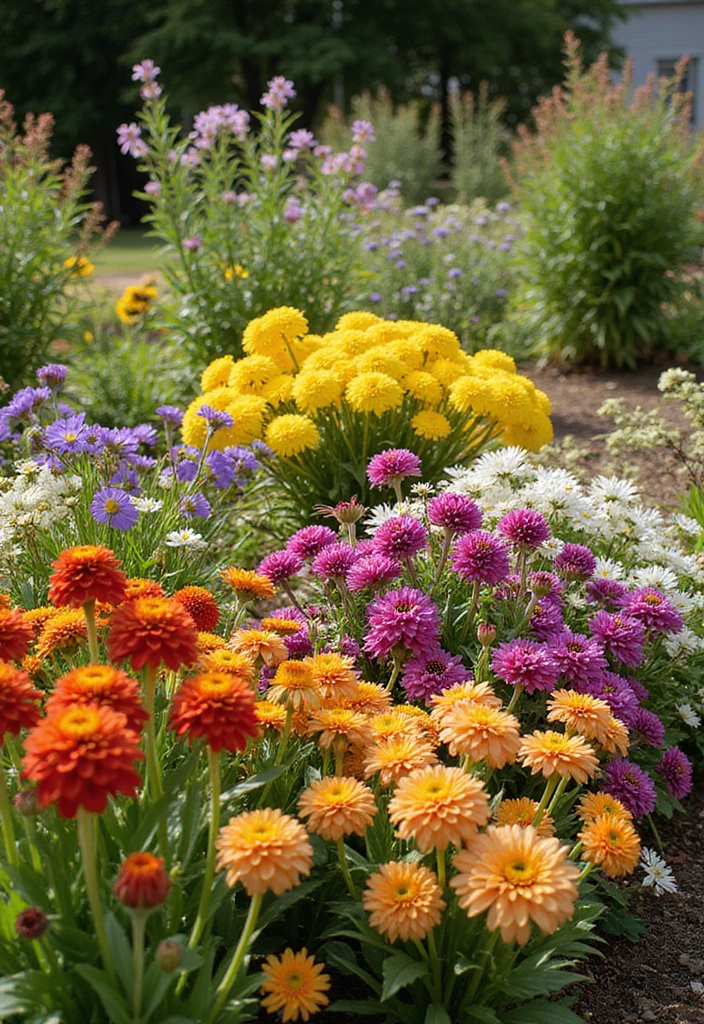
A cutting garden is a fabulous way to ensure you always have fresh flowers for your home! This dedicated space can feature a variety of blooms that can be snipped for arrangements. To plan your cutting garden successfully, consider the following tips:
– Select a mix of annuals and perennials for continuous blooms. For a great start, try the organic flower seeds variety pack which includes vibrant zinnia and dahlia seeds ideal for pollinator gardens and easy to grow outdoors.
– Ensure you have enough space for healthy growth and airflow. This will help your flowers flourish and provide an abundant supply for cutting.
– Use the right tools for harvesting without damaging plants. The garden pruning shears are perfect for snipping stems cleanly, ensuring your blooms last longer in arrangements. Additionally, a garden trowel set will be invaluable for planting and digging, helping you cultivate your cutting garden effectively.
Creating a cutting garden not only beautifies your home but also encourages regular garden interaction. With the right seeds and tools, you’ll enjoy the process of tending to your flowers and bringing the beauty indoors.
27. Utilize Garden Stakes and Labels
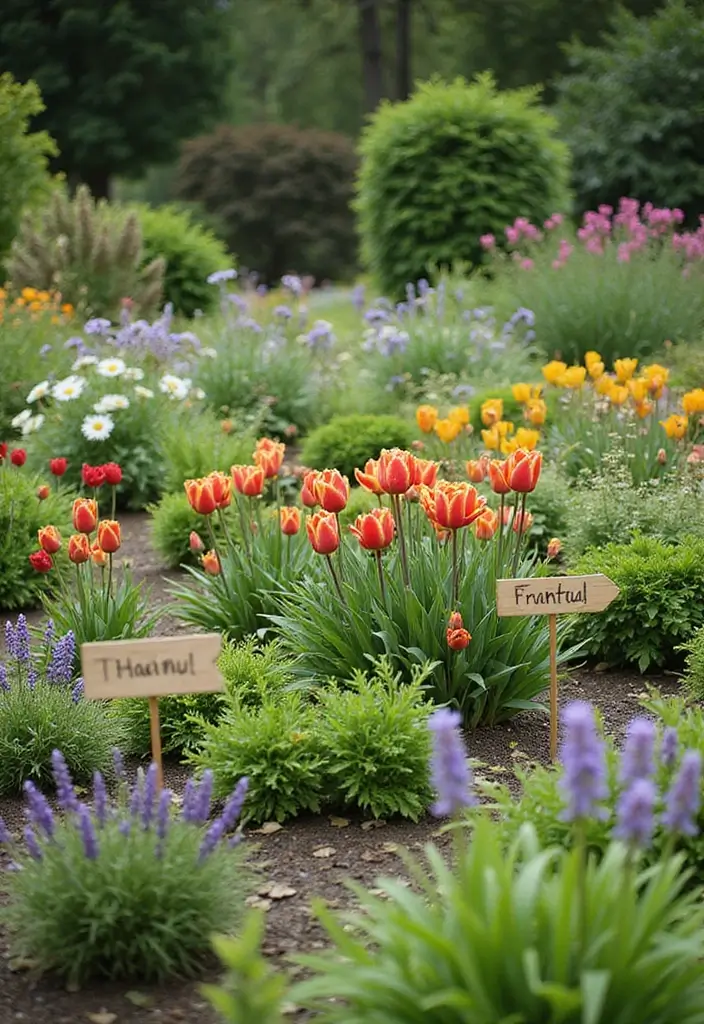
Organize and personalize your garden using garden stakes and labels. These can help you keep track of what plants are where while also adding a decorative element. For a rustic touch, consider using materials like wood or stone.
To enhance your labeling, you might want to use waterproof paint markers that are perfect for ensuring longevity, allowing you to create vibrant and lasting labels. With options like the TBC the Best Crafts 24 Colors Dual Tip Acrylic Paint Markers, you’ll be able to get creative with designs that match your garden theme.
For eco-friendly labeling, check out eco-friendly garden labels, such as bamboo plant labels. These 100% natural and biodegradable tags are great for labeling herbs, seedlings, and even cheeses or desserts, adding a personal touch while being kind to the environment.
Consider also incorporating wooden garden stakes like the Kitzmans – Dixon LLC 24” Grade and Survey Stakes. Stylish stakes and labels can elevate your garden’s functionality while providing charm, making it easier to enjoy and maintain your outdoor space.
28. Seasonal Gardening Workshops
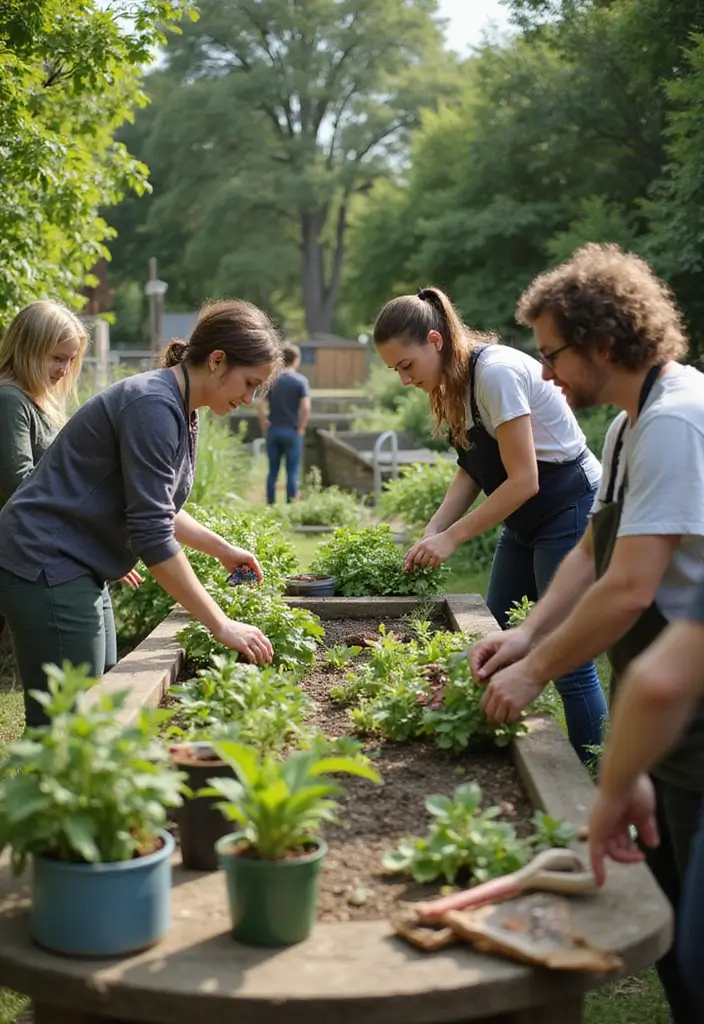
Share and gain knowledge through seasonal gardening workshops that can enhance your skills. These gatherings often focus on specific gardening topics, from planting to design techniques. Look for local community centers or online platforms offering workshops in your area. To make the most of these opportunities, consider joining groups or clubs that focus on gardening. Networking with fellow enthusiasts can be invaluable for exchanging tips and resources.
To keep track of your gardening progress and ideas, a gardening journal can be a helpful tool. This guided notebook allows you to log your vegetable, flower, and herb planting, helping you reflect on what works best in your garden over time.
Additionally, having the right tools is essential for any gardener. A gardening tool set can set you up for success with everything from digging to planting and maintaining your garden. These heavy-duty tools will make your gardening experience easier and more enjoyable.
Consider even hosting your own workshops to share your knowledge and foster community. Seasonal workshops create connections and a love for gardening while enriching your own practice.
29. Embrace Seasonal Changes in Decor
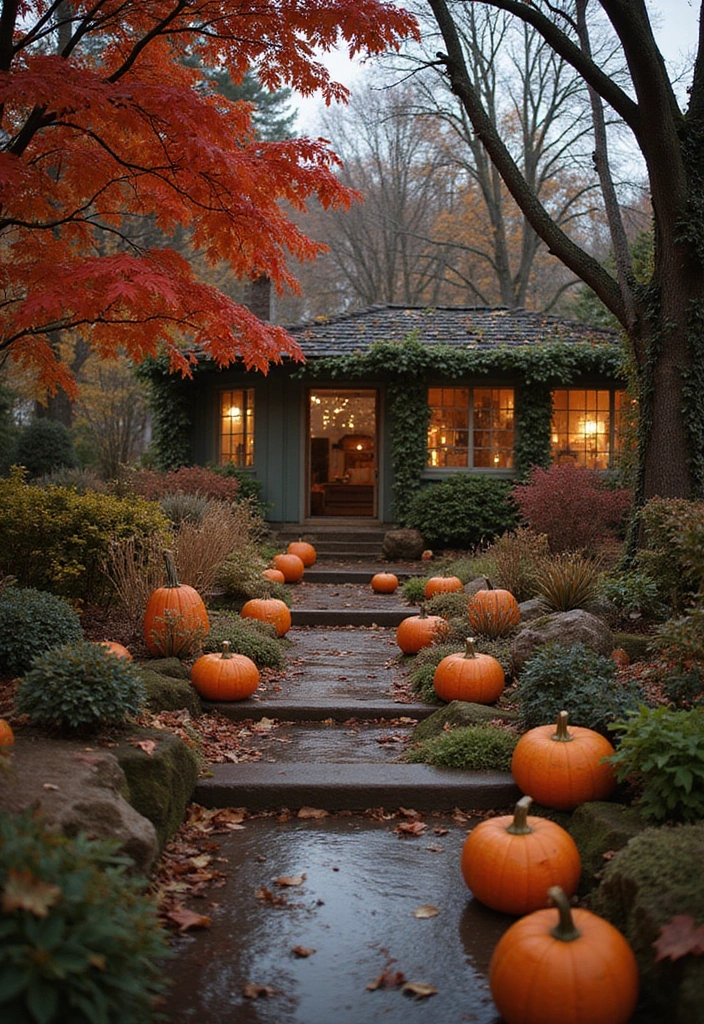
Switching up your garden decor can reflect the beauty of each season. In the fall, incorporate elements like pumpkins with the seasonal garden decor set that features charming metal pumpkin yard stakes and a welcome sign, perfect for bringing that cozy autumn vibe to your outdoor space. As winter approaches, transform your garden with string lights for outdoor use. These 100FT patio lights not only add a festive touch but also illuminate your garden during the darker days, creating a magical atmosphere.
To enhance your garden’s natural beauty year-round, consider using rustic touches like the rustic natural elements decor. A decorative garden flag featuring beautiful wildflowers will bring a sense of life and vibrancy, reflecting the season’s charm.
Embracing seasonal changes not only adds character and charm to your outdoor space but also keeps it fresh and inviting throughout the year. A simple decor switch can breathe new life, capturing the essence of each season while making your garden a true masterpiece.
Conclusion
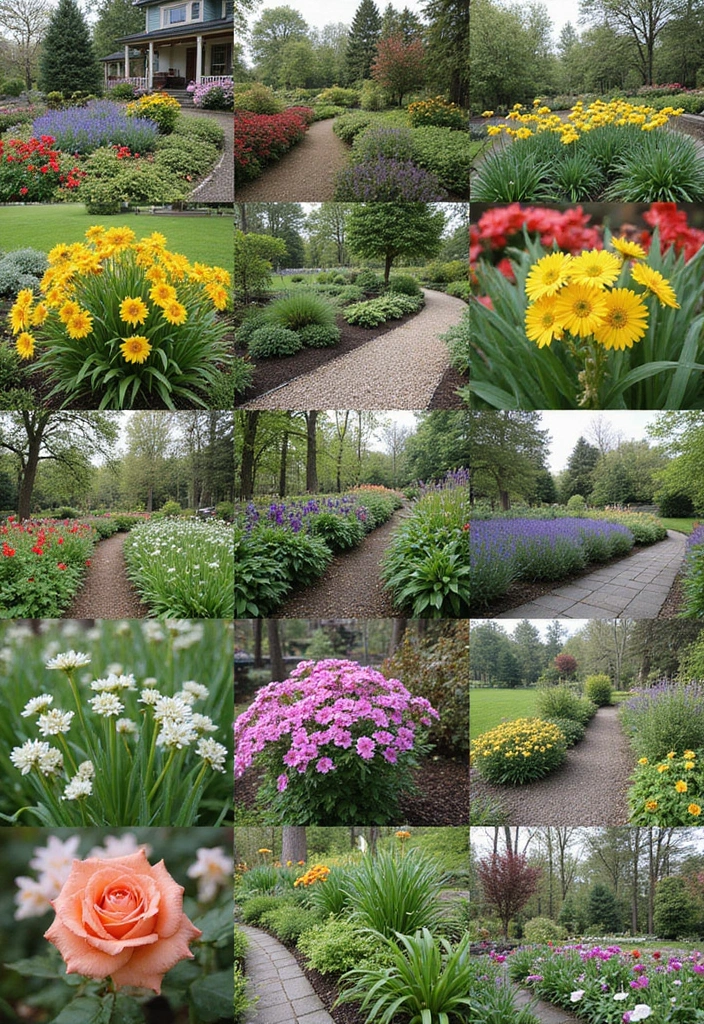
With these 29 outdoor garden ideas tailored for every season, you have the tools to create a sustainable and vibrant space in your small garden.
Embracing the beauty of seasonal changes can transform your outdoor area, making it not only more functional but also a delightful retreat. Experiment with these ideas and watch your garden flourish in every season!
Note: We aim to provide accurate product links, but some may occasionally expire or become unavailable. If this happens, please search directly on Amazon for the product or a suitable alternative.
This post contains Amazon affiliate links, meaning I may earn a small commission if you purchase through my links, at no extra cost to you.
Frequently Asked Questions
What are some creative outdoor garden ideas for small spaces?
If you’re limited on space, consider options like vertical gardens or container gardening. Vertical gardens can transform walls into lush, green features, while container gardening offers flexibility to arrange plants in a way that suits your style. Both methods maximize your space and allow for creative expression in your outdoor area!
How can I implement seasonal planting strategies in my garden?
Seasonal planting strategies are all about timing! Start by researching which plants thrive in each season. For example, plant spring bulbs early in the year, and consider fall harvest crops like kale and squash as the weather cools. This way, your garden will be vibrant and productive throughout the year, ensuring there’s always something beautiful or edible to enjoy!
What maintenance is required for a sustainable outdoor garden throughout the year?
Year-round garden maintenance is essential for sustainability. In the spring, focus on planting and soil enrichment with composting. During summer, ensure proper watering and consider drought-resistant plants. In the fall, prepare for the winter by cleaning up debris and protecting your plants. Finally, winter care includes mulching and checking for pests. Regular attention to your garden will keep it flourishing and healthy!
How can I attract pollinators to my garden?
Creating a pollinator-friendly garden is a fantastic way to support local wildlife! Plant a diverse range of nectar-rich flowers, especially native plants, to attract bees and butterflies. Avoid pesticides and provide habitat options like native shrubs or small water sources. The more variety and shelter you offer, the more pollinators will be drawn to your sustainable outdoor space!
What are some eco-friendly landscaping solutions for my garden?
For eco-friendly landscaping, consider using recycled materials for pathways or garden decor. Incorporating a rain garden can help manage water runoff while enhancing biodiversity. Additionally, using native plants not only requires less maintenance but also supports local ecosystems. These solutions can beautify your space while promoting sustainability and harmony with nature!
Related Topics

